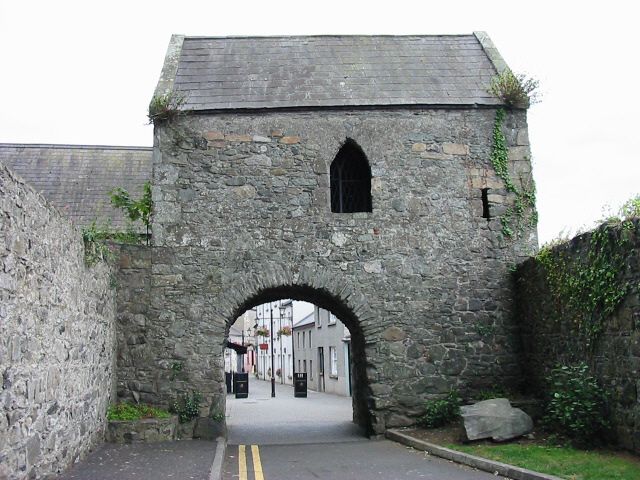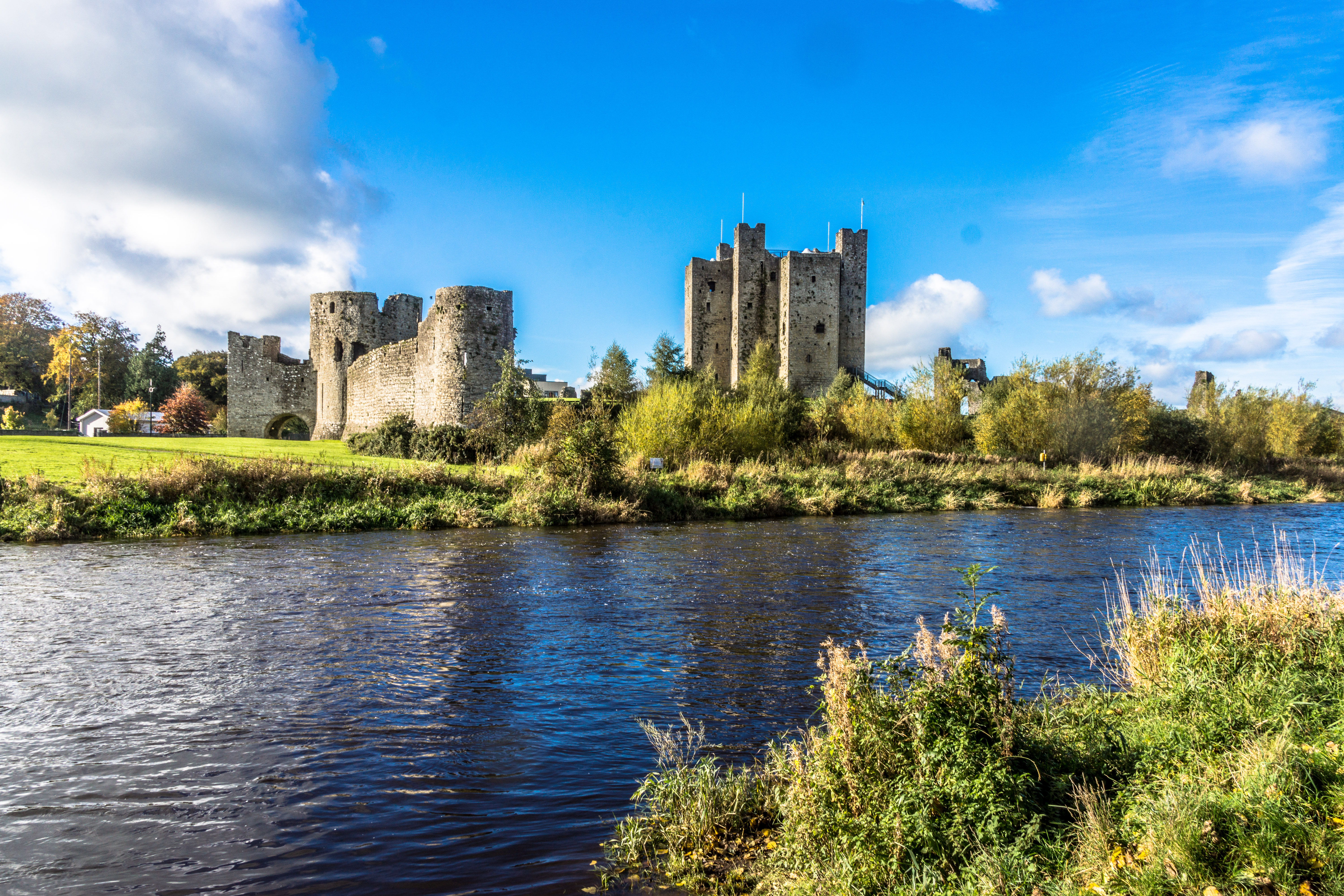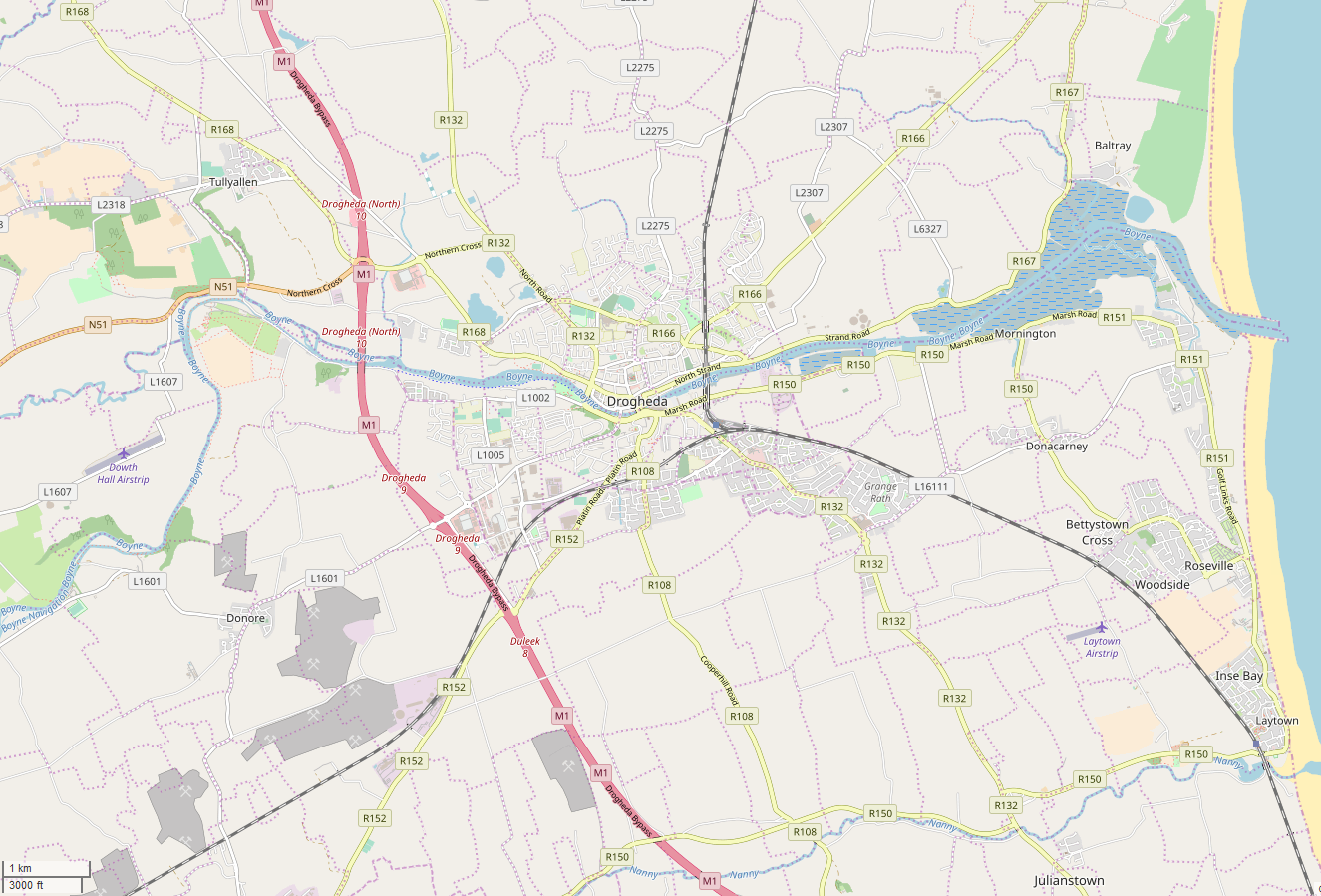|
Siege Of Dublin (1649)
The siege of Dublin took place in 1649 during the Irish Confederate Wars. It was a failed attempt by combined Irish Royalist and Confederate forces to capture the capital of Dublin which was held by English Republican forces under Michael Jones. It was part of a strategy by Duke of Ormonde, head of an alliance loyal to Charles II, to seize the remaining foothold of Ireland still under the control of the London Parliament. The siege was abandoned following a decisive defeat at the Battle of Rathmines, followed soon afterwards by the arrival of Oliver Cromwell and fresh reinforcements. Background Michael Jones had controlled Dublin since 1647, which had functioned as the base of operations for his forces and their Irish Protestant allies. The execution of Charles I and the declaration of England as a Republic in early 1649 rapidly changed the situation in Ireland. Groups of former enemies now joined forces, pledging allegiance to the Prince of Wales as Charles II. Amo ... [...More Info...] [...Related Items...] OR: [Wikipedia] [Google] [Baidu] |
Irish Confederate Wars
The Irish Confederate Wars, took place from 1641 to 1653. It was the Irish theatre of the Wars of the Three Kingdoms, a series of civil wars in Kingdom of Ireland, Ireland, Kingdom of England, England and Kingdom of Scotland, Scotland, all then ruled by Charles I of England, Charles I. The conflict caused an estimated 200,000 deaths from fighting, as well as war-related famine and disease. It began with the Irish Rebellion of 1641, when local Catholics tried to seize control of the Dublin Castle administration. They wanted an end to anti-Catholic discrimination, to increase Irish self-governance, and to roll back the Plantations of Ireland. They also wanted to prevent an invasion by anti-Catholic Roundhead, English Parliamentarians and Covenanter, Scottish Covenanters, who were defying the king. Rebel leader Felim O'Neill of Kinard, Felim O'Neill claimed to be Proclamation of Dungannon, doing the king's bidding, but Charles condemned the rebellion after it broke out. The rebellio ... [...More Info...] [...Related Items...] OR: [Wikipedia] [Google] [Baidu] |
Murrough O'Brien, 1st Earl Of Inchiquin
Murrough MacDermod O'Brien, 1st Earl of Inchiquin (September 1614 – 9 September 1673), was an Irish nobleman and soldier, who came from one of the most powerful families in Munster. Known as ''Murchadh na dTóiteán'' ("Murrough the Burner"), he initially trained for war in the Spanish service. He accompanied the Earl of Strafford into Leinster on the outbreak of the Irish Rebellion of 1641 and was appointed governor of Munster in 1642. He had some small success, but was hampered by lack of funds and he was outwitted by the Irish leader, Viscount Muskerry, at Cappoquin and Lismore. His forces dispersed at the truce of 1643. Murrough visited Charles I at Oxford in 1644, but found it expedient to submit to the English Parliament the same year as the Parliamentarians being masters of sea, were the only people who could help the Munster Protestants defend themselves against Roman Catholics. He was made President of Munster by Parliament, and sought to enhance his position with ... [...More Info...] [...Related Items...] OR: [Wikipedia] [Google] [Baidu] |
Carlingford, County Louth
Carlingford (; ) is a coastal town and civil parish in northern County Louth, Ireland. For the purposes of local government, the town is part of the Dundalk Municipal District. It is situated on the southern shore of Carlingford Lough with Slieve Foy mountain as a backdrop, sometimes known as Carlingford Mountain. It is the main town on the Cooley Peninsula. Located on the R176/ R173 roads between Greenore and Omeath village, Carlingford is approximately north east (by road) from Dundalk (15.6 km; 9¾ miles directly), north of Dublin and south of the border with Northern Ireland. Carlingford won the Irish Tidy Towns Competition in 1988. Carlingford still retains its medieval layout noticeable by the narrow lanes and small streets. Tholsel Street is where the last of the medieval walled town's gates can still be seen, called "The Tholsel" which apparently was also used as a gaol, on Tholsel Street itself there is still a 16th-century Town House known as the Carling ... [...More Info...] [...Related Items...] OR: [Wikipedia] [Google] [Baidu] |
Newry
Newry (; ) is a City status in Ireland, city in Northern Ireland, standing on the Newry River, Clanrye river in counties County Down, Down and County Armagh, Armagh. It is near Republic of Ireland–United Kingdom border, the border with the Republic of Ireland, on the main route between Belfast (34 miles/55 km away) and Dublin (67 miles/108 km away). The population was 27,913 in 2021. Newry was founded in 1144 as a monastic settlement, settlement around a Cistercian abbey. In the 16th century the English dissolved the abbey and built Bagenal's Castle on the site. Newry grew as a market town and a garrison, and became a port in 1742 when the Newry Canal was opened, the first summit-level canal in Ireland. A cathedral city, it is the episcopal seat of the Roman Catholic Diocese of Dromore. In 2002, as part of the Golden Jubilee of Elizabeth II, Newry was granted City status in the United Kingdom#Northern Ireland, city status along with Lisburn. Name The name Newry i ... [...More Info...] [...Related Items...] OR: [Wikipedia] [Google] [Baidu] |
Trim, County Meath
Trim () is a town in County Meath, Ireland. It is situated on the River Boyne and, as of the 2022 census of Ireland, 2022 census, had a population of 9,563. The town is in a Civil parishes in Ireland, civil parish of the same name. The town is noted for Trim Castle – the largest Normans, Norman castle in Ireland. One of the two cathedrals of the Diocese of Meath and Kildare, United Dioceses of Meath and Kildare – Trim Cathedral, St Patrick's cathedral – is located north of the river. Trim won the Irish Tidy Towns Competition in 1972, 1984, 2014 and 2022, and was the joint winner with Ballyconnell in 1974. Trim was historically the county town of Meath, but this title was passed on in 1898 to the larger, neighbouring town of Navan. History Early history At an early date, a monastery was founded at Trim, which lay within the petty kingdom (''tuath'') of the Cenél Lóegaire, Cenél Lóegairi. It is traditionally thought to have been founded by St. Patrick and left in the ... [...More Info...] [...Related Items...] OR: [Wikipedia] [Google] [Baidu] |
Richard O'Farrell (Irish Confederate)
Richard O'Farrell was an Irish soldier of the seventeenth century most notable for his service in the Irish Confederate Wars from 1642 to 1651. He rose to the rank of Lieutenant General. Like many other Irish officers in the decades following the Flight of the Earls in 1607, O'Farrell served in the Spanish Army. He was commissioned into an Irish Regiment and developed battle experience while serving under the veteran Owen Roe O'Neill. In 1641, a major rebellion broke out in Ireland, led by northern Catholics such as Sir Phelim O'Neill and Lord Maguire. While continuing to pledge allegiance to Charles I, they launched attacks on Protestant inhabitants. While much of Ulster and Connaught was seized, an attempt to capture Dublin failed. O'Farrell was one of many exiled officers who returned to join the army of the rebels, who established their own government in Kilkenny. He arrived at Wexford in the company of Rosa O'Neill and Henry Roe O'Neill, the wife and daughter of his for ... [...More Info...] [...Related Items...] OR: [Wikipedia] [Google] [Baidu] |
George Monck
George Monck, 1st Duke of Albemarle (6 December 1608 3 January 1670) was an English military officer and politician who fought on both sides during the Wars of the Three Kingdoms. A prominent military figure under the Commonwealth, his support was crucial to the 1660 Stuart Restoration of Charles II. Monck began his military career in 1625 and served in the Eighty Years' War until 1638, when he returned to England. Posted to Ireland as part of the army sent to suppress the Irish Rebellion of 1641, he quickly gained a reputation for efficiency and ruthlessness. After Charles I agreed to a truce with the Catholic Confederacy in September 1643, he was captured fighting for the Royalists at Nantwich in January 1644 and remained a prisoner for the next two years. Released in 1647, he was named Parliamentarian commander in Eastern Ulster, fought in Scotland under Oliver Cromwell in the 1650 to 1652 Anglo-Scottish War, and served as General at sea during the 1652 to 1654 First ... [...More Info...] [...Related Items...] OR: [Wikipedia] [Google] [Baidu] |
Dundalk
Dundalk ( ; ) is the county town of County Louth, Ireland. The town is situated on the Castletown River, which flows into Dundalk Bay on the north-east coast of Ireland, and is halfway between Dublin and Belfast, close to and south of the border with Northern Ireland. It is surrounded by several townlands and villages that form the wider Dundalk Municipal District. It is the seventh largest List of urban areas in the Republic of Ireland, urban area in Ireland, with a population of 43,112 as of the 2022 census of Ireland, 2022 census. Dundalk has been inhabited since the Neolithic period. It was established as a Normans, Norman stronghold in the 12th century following the Norman invasion of Ireland, and became the northernmost outpost of The Pale in the Late Middle Ages. Located where the northernmost point of the province of Leinster meets the province of Ulster, the town came to be known as the "Gap of the North". The modern street layout dates from the early 18th century and ... [...More Info...] [...Related Items...] OR: [Wikipedia] [Google] [Baidu] |
Drogheda
Drogheda ( , ; , meaning "bridge at the ford") is an industrial and port town in County Louth on the east coast of Ireland, north of Dublin. It is located on the Dublin–Belfast corridor on the east coast of Ireland, mostly in County Louth but with the south fringes of the town in County Meath, north of Dublin city centre. Drogheda had a population of 44,135 inhabitants in 2022, making it the List of settlements on the island of Ireland by population, eleventh largest settlement by population in all of Ireland, and the largest town in Ireland, by both population and area. It is the second largest in County Louth with 35,990 and sixth largest in County Meath with 8,145. It is the last bridging point on the River Boyne before it enters the Irish Sea. The UNESCO World Heritage Site of Newgrange is located west of the town. Area Drogheda was founded as two separately administered towns in two different territories: Drogheda-in-Kingdom of Meath, Meath (i.e. the Lordship of Mea ... [...More Info...] [...Related Items...] OR: [Wikipedia] [Google] [Baidu] |
Naas
Naas ( ; or ) is the county town of County Kildare in Republic of Ireland, Ireland. In 2022, it had a population of 26,180, making it the largest town in County Kildare (ahead of Newbridge, County Kildare, Newbridge) and the List of urban areas in the Republic of Ireland, fourteenth-largest urban centre in Ireland. History The name of Naas has been recorded in three forms in Irish Language, Irish: , translating as 'Place of Assembly of the Kings'; , translating to 'the Place of Assembly'; and , translating to 'Place of assembly of the Leinster Men'. Irish mythology suggests that the name arose as the burial site of Nás (a wife of Lugh of the Tuatha Dé Danann, Tuatha De Danann). It is also said to be where Lugh held his royal court. Nás was said to have been buried on The Moat Hill (Dún Nás). The Book of Leinster contains the Dindsenchas (lore of places) of Naas with the following verses discussing where the name supposedly came from.:“(Nás)… claims of right the br ... [...More Info...] [...Related Items...] OR: [Wikipedia] [Google] [Baidu] |
Finglas
Finglas (; ) is a northwestern outer suburb of Dublin, Republic of Ireland, Ireland. It lies close to Junction 5 of the M50 motorway (Ireland), M50 motorway, and the N2 road (Ireland), N2 road. Nearby suburbs include Glasnevin and Ballymun; Dublin Airport is to the north. Finglas lies mainly in the postal district of List of Dublin postal districts, Dublin 11. Finglas is the core of a Finglas (civil parish), civil parish of the same name in the Barony (Ireland), barony of Castleknock (barony), Castleknock. Name The name Finglas (), meaning ''clear streamlet'', is derived from the Finglas River, which passed through the historic settlement. Geography The centre of Finglas lies on a rise overlooking the valley of the River Tolka, at an altitude of . The Tolka runs through western and southern Finglas, and forms part of the boundary between Finglas and Glasnevin. Flowing from the north is the stream, the Finglas River, for which the area is named, forming in turn from branches ... [...More Info...] [...Related Items...] OR: [Wikipedia] [Google] [Baidu] |
Staging Post
A stage station or relay station, also known as a staging post, a posting station, or a stage stop, is a facility along a main road or trade route where a traveller can rest and/or replace exhausted working animals (mostly riding horses) for fresh ones, since long journeys are much faster with fewer delays when using well fed and rested mounts. Stage is the space between the places known as stations or stops — also known in British English as posts or relays. Organised long-distance land travel became known as staging or posting. Stagecoaches, post chaises, private vehicles, individual riders and the like followed the already long-established system for messengers, couriers and letter-carriers. Through metonymy the name stage also came to be used for a stagecoach alone. Posting and staging Purpose Until well into the 19th century an overland traveller anxious to reach a destination as fast as possible depended on animals. Systems of arranging a supply of fresh horses to ... [...More Info...] [...Related Items...] OR: [Wikipedia] [Google] [Baidu] |








